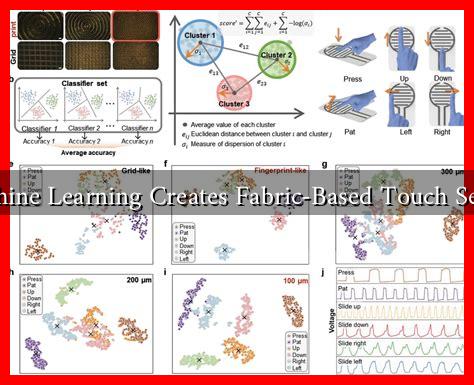-
Table of Contents
- Machine Learning Creates Fabric-Based Touch Sensor
- The Intersection of Fashion and Technology
- How Machine Learning Powers Fabric-Based Touch Sensors
- Example: Smart Gloves
- The Benefits of Fabric-Based Touch Sensors
- Case Study: Levi’s Jacquard Jacket
- Future Implications and Opportunities
- Key Takeaways
Machine Learning Creates Fabric-Based Touch Sensor
Advancements in technology have led to the development of innovative solutions that merge the worlds of fashion and technology. One such groundbreaking invention is the fabric-based touch sensor, which has been made possible through the integration of machine learning algorithms. This cutting-edge technology has the potential to revolutionize the way we interact with our clothing and accessories, opening up a world of possibilities for both consumers and designers.
The Intersection of Fashion and Technology
In recent years, there has been a growing trend towards the convergence of fashion and technology. From smartwatches to wearable fitness trackers, technology has become an integral part of our daily lives. The development of fabric-based touch sensors represents a new frontier in this intersection, offering a seamless blend of functionality and style.
How Machine Learning Powers Fabric-Based Touch Sensors
Machine learning algorithms play a crucial role in the functionality of fabric-based touch sensors.
. These sensors are embedded within the fabric of clothing or accessories, allowing users to interact with them through touch gestures. By leveraging machine learning, these sensors can accurately interpret and respond to a wide range of touch inputs, making them highly versatile and user-friendly.
Example: Smart Gloves
One practical application of fabric-based touch sensors is in the development of smart gloves. These gloves are equipped with touch-sensitive fabric that can detect various gestures, such as tapping, swiping, and pinching. By using machine learning algorithms, the gloves can interpret these gestures and perform corresponding actions, such as controlling a smartphone or adjusting the volume of a music player.
The Benefits of Fabric-Based Touch Sensors
Fabric-based touch sensors offer a host of benefits that make them an attractive option for both consumers and designers. Some of the key advantages include:
- Seamless integration into clothing and accessories
- Enhanced user experience through intuitive touch interactions
- Customizable gestures and functionalities
- Improved accessibility for individuals with disabilities
Case Study: Levi’s Jacquard Jacket
One notable example of fabric-based touch sensors in action is the Levi’s Jacquard jacket, developed in collaboration with Google. This innovative jacket features touch-sensitive fabric on the sleeve, allowing wearers to control their smartphone with simple gestures. By incorporating machine learning algorithms, the jacket can learn and adapt to the user’s preferences over time, making interactions more personalized and efficient.
Future Implications and Opportunities
The integration of machine learning into fabric-based touch sensors opens up a world of possibilities for the future of fashion and technology. As this technology continues to evolve, we can expect to see even more innovative applications and products that push the boundaries of what is possible. From interactive clothing to smart accessories, the potential for creativity and functionality is limitless.
Key Takeaways
Machine learning has enabled the creation of fabric-based touch sensors that revolutionize the way we interact with our clothing and accessories. By leveraging this technology, designers can develop innovative products that offer enhanced functionality and style. As the intersection of fashion and technology continues to evolve, we can look forward to a future where our clothing becomes not just a form of self-expression, but also a means of communication and interaction.





